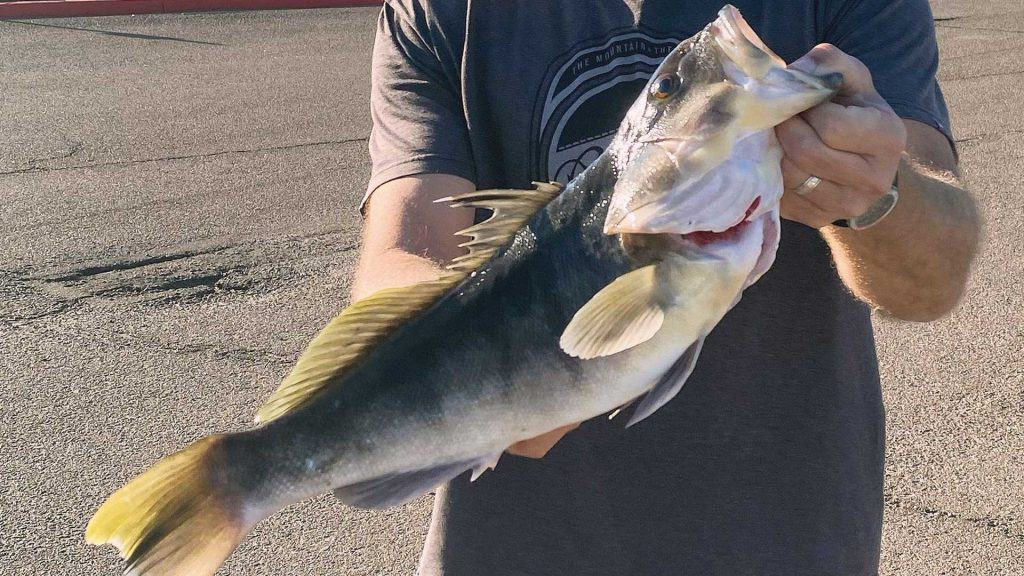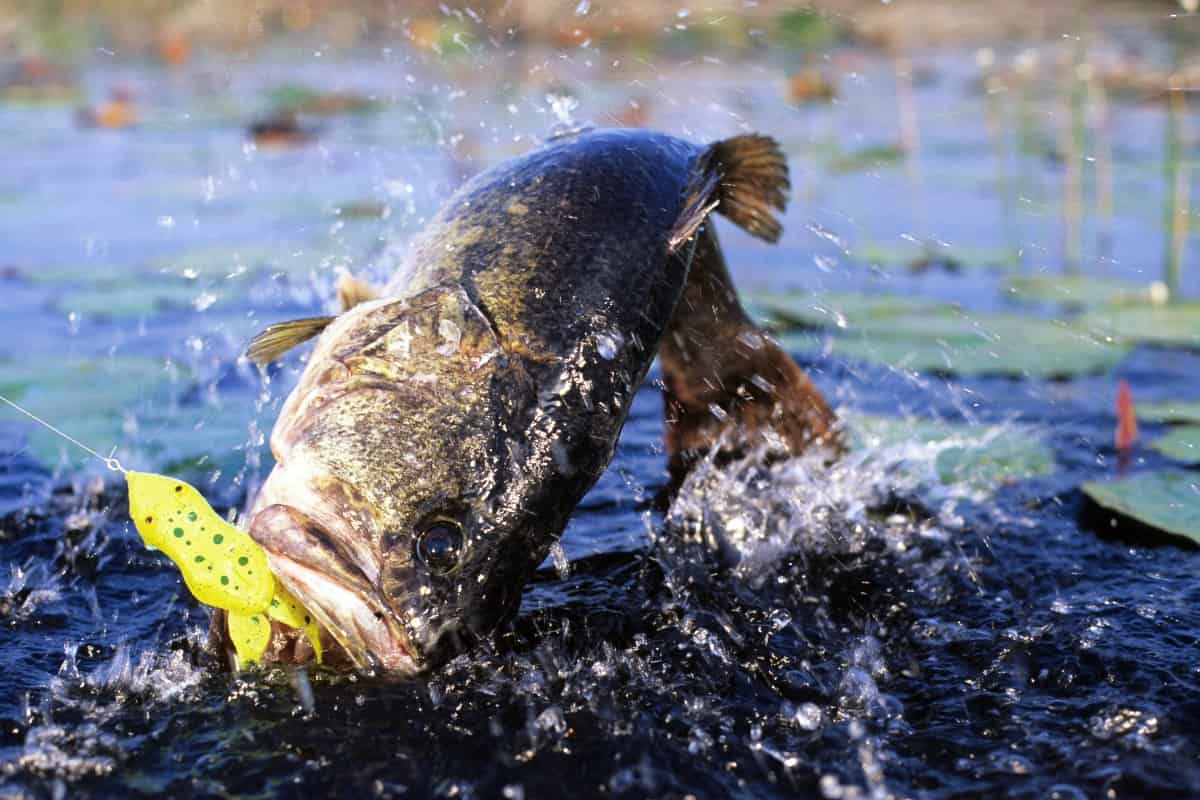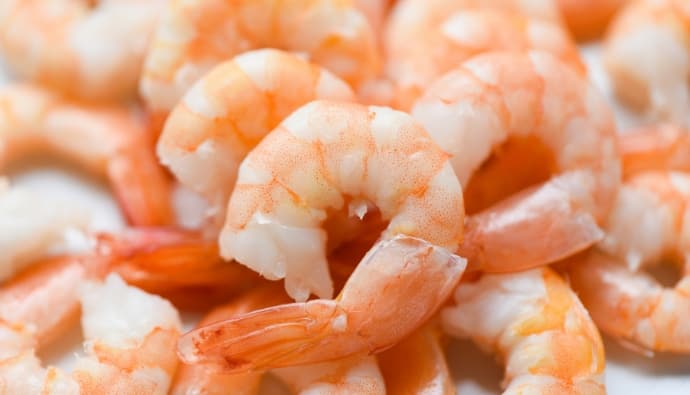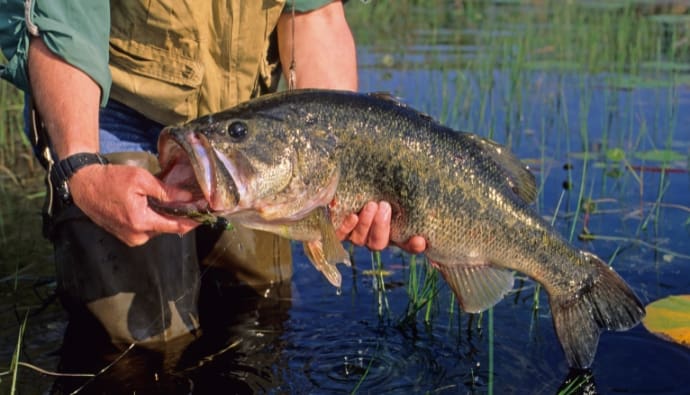Barred sand bass spearfishing is just as fun as fishing this species on a boat.
These fish are nearshore marine species as they are usually over sandy bottoms near the kelp. Hence, their name sand bass or sometimes, sandies or grumpers.
If you plan on spearfishing for bass, these fish are usually in the blue water of reefs, wrecks, piers, or structures that meet the sand. Commercial fishing for this fish is not allowed in southern California and other states as they are only for recreational fishing.

Listen to more spearfishing tips on the Cast & Spear Podcast
Sand Bass Behavior While Spearfishing
Barred Sand Bass are generally in flat sandy areas near rocky structures. I’ve seen them on the rocks near calico bass, which tells me if there’s food, they’re willing to go up the water column.
They aren’t super skittish and will give you time to approach while they are stationary or moving slowly. Once you get around 10 feet, then you’ll have to be quick to decide if you want to take the shot before they make a quick dart away.
Sand Bass Spearfishing Technique
Hunting in reefs or near rocks suits new divers as this is a perfect practice for a more complex spearfishing experience. As you move to target your gamefish in spearfishing, your body will develop a good diving shape.
When hunting for sandies, drop down to the bottom of the water, but look around as these fish may unsuspectingly swim nearby. You want to avoid dropping right on top of a potential catch and shocking it away.
As you get to the bottom, it’s time to wait patiently. You may even scratch on the rocks or throw sand to attract the fish while you wait with your pole spears.
Finding a Hunting Spot
When looking for the perfect reef water where you can go hunting, the diver should be attentive to where the waves break during big swells. These types of reef spots are easy, and you get to observe and learn the fish habits in a short period.
To find these types of water, you will have to go up the reefs up the current side. Then, notice how more activity is in this area than on the down-current side.
Take note that the tides dictate the current, which affects the reef in general—observing the reef fish when hunting is one way to learn how they switch reef spots when the tide changes from high to slack to low tide.
It depends on your preference at which tide you like to dive in. Although, aiming for the water where the sand meets the rocks will make sense as sandies are common in this area. This fish species often hides under the ledges and holes in the structure.
Frequently Asked Questions
Sandies, just like most fish, may be eaten, provided the fishing water is clean and free of harmful elements, like Mercury and other metals. Most spearos catch and cook barred sand bass and turned the meat into tacos.
Sandies are avid feeders, but they grow relatively slowly after the first year. The opportunistic sandies prey on a variety of aquatic creatures. Juvenile fish of this species feast on small invertebrates. And the mature fish feed on smaller fish, including anchovies, sardines, and midshipman. They also prey on crabs, clams, squid, and octopus as their meal.
Insider Advice
According to the Nearshore Marine Fish Research Program, barred sandies may comprise approximately 17% of the total number fished by the southern California marine recreational catch.
When spearfishing or boat fishing for sandies, try to fish for the male species, as this is one way to promote their conservation. These bass species are only for recreational fishing.
As spearos, let’s keep their numbers from declining by practicing a healthy fishery.




 Facebook
Facebook YouTube
YouTube









